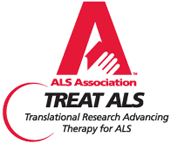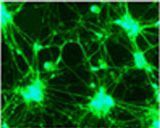
February 22, 2007
The ALS Association Uses Mouse Stem Cells to Find New Drugs
 [Quick Summary: A rapid, automated technique to screen for potential ALS treatments will be developed through funding by The ALS Association of investigators at the Harvard Stem Cell Institute, who will generate and test motor neurons derived from mouse embryonic stem cells.]
[Quick Summary: A rapid, automated technique to screen for potential ALS treatments will be developed through funding by The ALS Association of investigators at the Harvard Stem Cell Institute, who will generate and test motor neurons derived from mouse embryonic stem cells.]
Through its translational research initiative, TREAT ALS, The ALS Association is funding a method to find new drugs to slow or halt the disease amyotrophic lateral sclerosis (ALS, also known as Lou Gehrig’s Disease). The screening technique will harness motor neurons derived from mouse embryonic stem cells and will be led by Lee Rubin, Ph.D., of the Harvard Stem Cell Institute.
TREAT ALS (Translational Research Advancing Therapy for ALS) is a drug discovery program and clinical trials process that accelerates discovery and testing of new treatments for the disease. The project to develop and validate this cell based screening assay will depend on reaching set goals for continued funding; that is, it is milestone driven.
“We are very excited about working together with The ALS Association to contribute to finding a cure for this devastating disease,” said Rubin. “Our approach is a new one and is focused on setting up a large scale screen in motor neurons generated in virtually unlimited numbers from mouse embryonic stem cells.” |
|
Motor neurons from mouse stem cells. Amy Sinor, Ph.D. & |
Motor neurons are the cells that die in the disease, but they are challenging to obtain and grow in the lab in order to create an optimal automated screening assay aimed at candidate discovery for ALS. Standard tissue culture demands thousands of labor intensive dissections of mouse spinal cords to provide the targeted cells in sufficient numbers.
Rubin and collaborating Harvard stem cell scientist Kevin Eggan, Ph.D., now can generate billions of mouse motor neurons per week.
The investigators also can provide mouse motor neurons that carry a mutation involved in some inherited forms of the disease. To do so, they will obtain stem cells from mice expressing the human mutant protein, copper-zinc superoxide dismutase (SOD1).
Two different stressors for the growing motor neurons, with and without the mutation, will be validated with initial TREAT ALS funding. One is withdrawal of growth factors. The other is to produce excess stimulation with a compound that mimics the messenger molecule, glutamate. Both challenges are suspect in the ALS disease process. Only a few percent of ALS cases are due to SOD1 mutation, so this screen will survey broad possibilities for therapeutic investigation.
Once the screening assay is optimized, the researchers will test thousands of small molecules to rapidly identify by robotics any that could serve as a potential ALS therapy. Positive “hits” in the assays would have to be retested and confirmed, then optimized chemically as a potential drug candidate. Animal testing would be another prerequisite to any clinical investigation.
Members of the Rubin lab have worked with the biotech company Curis Inc., to test libraries of small molecules in cell-based assays that have yielded candidate therapeutics. Rubin’s team has additional experience collaborating with chemists at a company, Evotec/Oxford Asymmetry Inc., that will help with applying the most modern image analysis to identify living and dying cells in the new motor neuron screens.
Refer to The ALS Association’s web site for further information about TREAT ALS, Laboratory Models in ALS and Stem Cells.
